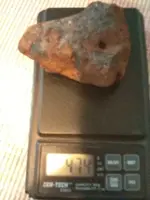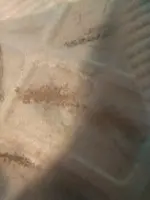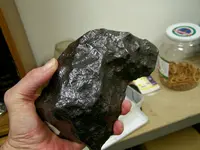'Meteor' and 'meteorite' are essentially the same thing. The difference is only that we call them 'meteors' while they are in outer space or 'incoming' and the name shifts to 'meteorites' if they actually reach the surface of the Earth.
Although not all meteorites have magnetic properties, anything which has a visible metallic content but isn't attracted to a magnet will not be a meteorite. There's no exception to that rule. Metallic meteorites will not leave a streak or, at best a weak dirty streak. It's also important to note when conducting a streak test that it's the colour of the streak on the porcelain itself which matters. Not the colour of any dust created during the streaking process. You need to blow and brush that away because it could just be oxidation residues coming off the surface of the specimen.
Railroad tracks are just about the worst place to look for meteorites. The ballast frequently has chunks of slag and clinker in it, although I can't say for sure that's what you have here. Slag and clinker frequently have a proportion of metal in them but it's not always iron-containing or magnetic. It depends on what kind of furnace operation has created it.










